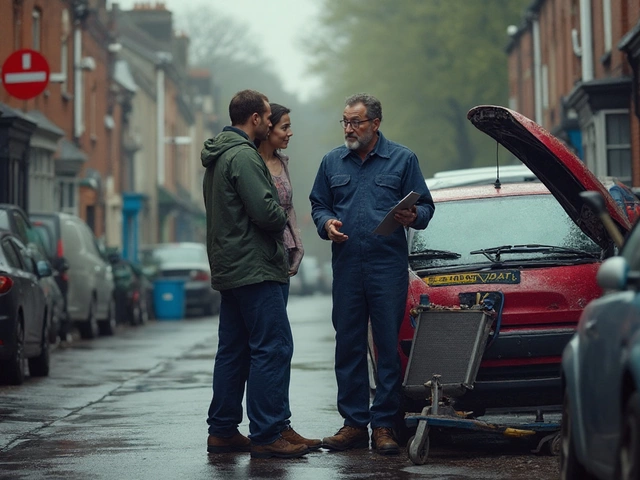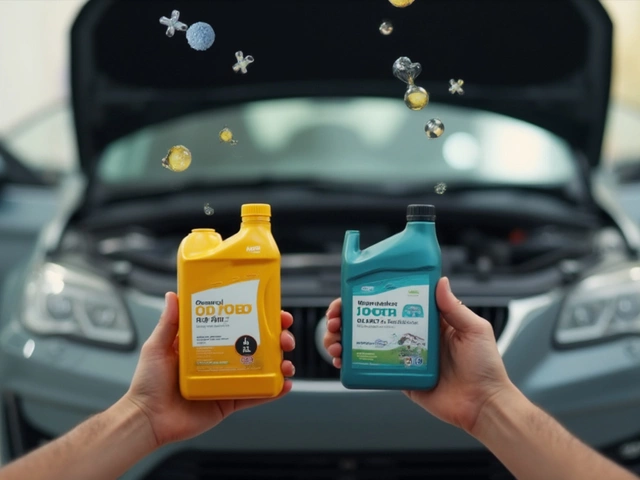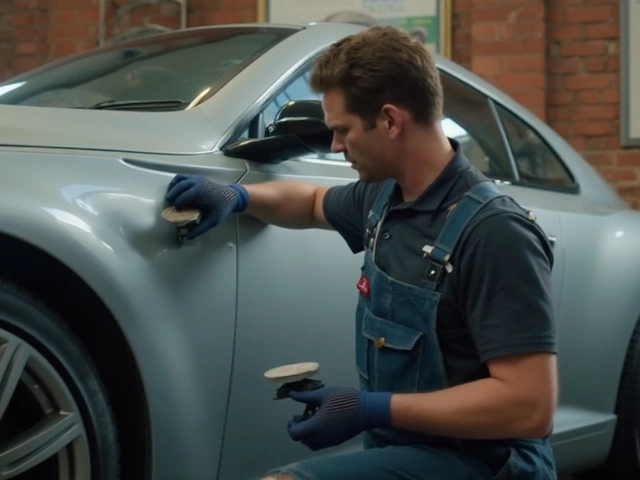Your car sputters, maybe dies out, and you’re already thinking, “Okay, how bad is this going to be?” Fuel pump problems always sound like a big deal. So, straight to the point: how long does it actually take to fix a fuel pump?
If you drive something common—let’s say a Toyota Camry or Ford F-150—you’re usually looking at anywhere from two to four hours in the shop for a fuel pump replacement. That’s assuming the repair team knows their way around your vehicle and there aren't wild surprises like stuck bolts or a rusty tank. If you’re tackling the job yourself, plan to double that time if you’ve never done it before. Some fuel pumps live inside the gas tank, which means either dropping the tank (not fun) or accessing a service panel if you get lucky.
The actual “fix” might only take an hour with the right tools and experience, but small stuff adds up fast—draining old gas, dealing with seized fasteners, wrestling the tank out, or tracking down the exact replacement part. Knowing what’s ahead helps you avoid the classic mistake of thinking, 'I'll just knock it out in an afternoon,” and then end up Ubering to work the next day.
- How Long It Really Takes to Replace a Fuel Pump
- What Impacts the Timeline: Factors to Consider
- DIY vs. Professional Repairs: Pros, Cons, and Expectations
- Tips to Make the Job Smoother and Faster
How Long It Really Takes to Replace a Fuel Pump
If you look up how long a fuel pump repair should take, you'll see a wide range. Dealerships and pro shops usually budget two to four hours for a basic fuel pump replacement on most sedans and trucks. Sometimes, the actual wrench-turning time is less than that, but there’s a lot more to it than just swapping out old for new.
If your car has an access panel under the back seat or trunk, the job speeds up. Those setups can take closer to one to two hours, start to finish, especially if no bolts are fused with rust. But if the fuel pump's stuck in the tank and you have to drop it, block up the car, disconnect everything, and face down gasoline fumes—plan for at least three to four hours. Older vehicles, or anything that’s spent its life up north where salt eats everything, could take even longer.
Here’s a basic breakdown of the process a mechanic or DIYer follows for most internal-tank fuel pumps:
- Disconnect the battery (safety first, always).
- Raise and support the car, then locate and drain the gas tank. (A pain if it’s full.)
- Disconnect fuel lines, sensors, and wiring from the tank.
- Lower the tank and set it aside. This is usually where stuck bolts or lines turn a quick job into a nightmare.
- Remove and replace the old fuel pump with the new one.
- Reverse the steps to put everything back together.
- Reconnect the battery, prime the system, and check for leaks.
For a quick look, here’s what typical car repair time estimates look like by vehicle type:
| Vehicle Type | Shop Time (Hours) | DIY Time (Hours) |
|---|---|---|
| Sedan (w/ access panel) | 1 - 2 | 2 - 4 |
| Truck/SUV (drop tank) | 2 - 4 | 4 - 6 |
| Older/Rusted Vehicles | 3 - 5+ | 5+ |
Shops have power tools, lifts, and experience—so if you’re rolling with basic hand tools and doing this solo in the driveway, pad your timeline. Also, if the car is newer and the fuel system is high-pressure, that adds a bit of extra safety checks.
What Impacts the Timeline: Factors to Consider
Not all cars are created equal when it comes to fuel pump repair. A bunch of things can speed it up or drag it out. Let’s break down exactly what changes the game when you’re looking at the clock.
- Vehicle Make and Model: Some cars are a pain—older European cars, for example, love to hide their fuel pumps deep inside the tank. Trucks sometimes offer easier access but often come with bigger tanks that are heavier to drop.
- Location of the Fuel Pump: If your ride has a handy service hatch under the back seat, you’re golden. Most cars, though, require you to lower the entire gas tank (especially if it’s a fuel pump replacement), which is an awkward, messy job.
- Rust and Corrosion: If you live where roads get salted in winter, rusty bolts and stubborn fuel lines can easily add an hour or two. Sometimes a quick spray of WD-40 the night before helps, but it’s never a sure thing.
- Fuel Level: Dropping a full tank is not just hard work—it gets messy, too. Garages will often siphon fuel out first to save weight and headaches. If you’re doing it in your driveway, try running it close to empty before starting.
- Parts Availability: Did you already buy the exact fuel pump you need, or are you stuck waiting for a part to arrive? If you order online, check that the part actually matches your car—wrong pumps are a common reason for unexpected delays.
- Experience and Equipment: Pros with a lift and power tools move way faster than folks on their backs in a driveway. If it’s your first rodeo, add extra time for looking up instructions and tracking down the right tools.
Here’s a quick look at what can change how long you’ll be stuck off the road:
| Factor | Extra Time Added |
|---|---|
| Rusty or stuck bolts | +30 to 60 minutes |
| No service access panel | +1 to 2 hours |
| Full gas tank | +45 minutes |
| Wrong replacement part | +1 day or more |
| Inexperienced DIYer | +2 hours (minimum) |
So when you're figuring out how long fuel pump repair will eat up, don’t just read a shop’s "labor time estimate" and call it done. Everyone’s situation is a little different.

DIY vs. Professional Repairs: Pros, Cons, and Expectations
So, should you jump in yourself or let a pro tackle your fuel pump repair? Here’s the real scoop—no sugarcoating, just facts.
Going the DIY route is tempting, especially when you see those labor charges. But replacing a fuel pump can get messy fast. First off, you’ll need at least a decent set of jacks, a solid socket set, and often a special fuel line tool. If your car has the pump inside the gas tank, get ready to drop the tank—meaning you need it as empty as possible. That’s not just heavy, it’s awkward (and, yeah, it stinks—literally).
Let’s talk safety. You’ll deal with flammable fuel, fumes, and tight spaces. If you’ve never done it before, set aside a whole day. Even then, you might run into stuck bolts or discover the part you bought online doesn’t quite fit. If your ride is older or rusty, multiply the hassle.
- Pros DIY: Save cash on labor, learn your car, satisfaction of a job done yourself, flexible timing.
- Cons DIY: Possible mistakes, time-consuming, risk of breaking something else (hello snapped fuel line fitting), safety hazards, and sometimes, voiding your warranty.
On the other hand, professional shops have lift bays, experience, and all the weird tools this job sometimes needs. Most shops can knock out a typical fuel pump replacement in 2–4 hours, and there’s usually some kind of guarantee on the work. Of course, you’ll pay more: labor averages $200–$400, depending on your vehicle and where you live.
- Pros Pro Shop: Speed, experience, right tools, work warranty, way less hassle.
- Cons Pro Shop: Higher cost, must schedule and wait, sometimes parts markup.
If you’re curious how many people dive into their own fuel pump repair, check out this random but telling breakdown:
| Repair Type | DIY Attempt Rate | Success Rate (on 1st try) |
|---|---|---|
| Fuel Pump Replacement | ~40% | 60% |
| Starter Replacement | ~60% | 75% |
Why do fewer folks DIY fuel pumps versus starters? It’s the risk, the mess, and the access hassle. My advice—if you’ve got time, tools, and patience (and maybe Rufus isn’t distracting you), try it yourself. Otherwise, let the shop handle it and get your car back without drama.
Tips to Make the Job Smoother and Faster
Want to avoid turning a fuel pump repair into an all-day project? There are a few things you can do before and during the job to keep things moving along and cut down on stress. Trust me, a little planning goes a long way—especially when you realize halfway through the gas tank's still half full.
- Work with a near-empty tank. Dropping a full tank is basically wrestling with a big, awkward waterbed. Plan ahead—run the tank close to empty or siphon out as much gas as possible.
- Check access panels. Some vehicles have a service hatch under the back seat or trunk. Always check your manual before going in. Access panels save a ton of time compared to dropping the whole tank.
- Invest in the right tools. Socket sets, fuel line disconnect tools, and a floor jack are musts. Don’t forget safety glasses—gasoline in your eye is worse than you think.
- Take photos as you go. Snap a pic of each step, especially wiring. It’s way easier than trying to remember where every little plug goes.
- Label connectors and hoses. Use tape or zip ties and label each one. Air and fuel lines can look alike, especially when you're in the thick of things.
- Double-check the part number. Not all fuel pump replacement parts are the same. Even between two trims of the same model, connections might be different. Cross-check your VIN with the part supplier.
- Have extra rags and a fire extinguisher handy. Gasoline spills are almost a sure thing. No shame in being too cautious with something flammable.
- Replace the fuel filter while you're in there. It's cheap, and a clogged filter can stress out your new pump.
Here’s a rough breakdown of how much time the main steps usually take in a pro shop versus DIY at home:
| Step | Shop Time (minutes) | DIY Time (minutes) |
|---|---|---|
| Draining tank/prep | 20 | 30-60 |
| Removing tank/access | 30 | 45-90 |
| Swapping pump | 30 | 30-60 |
| Reinstalling & test | 30 | 45-60 |
Bottom line—slow down to prep right, and the rest gets easier. It helps your wallet too, since botched fuel pump repair attempts can mean another trip to the parts store, or a call for a tow.






